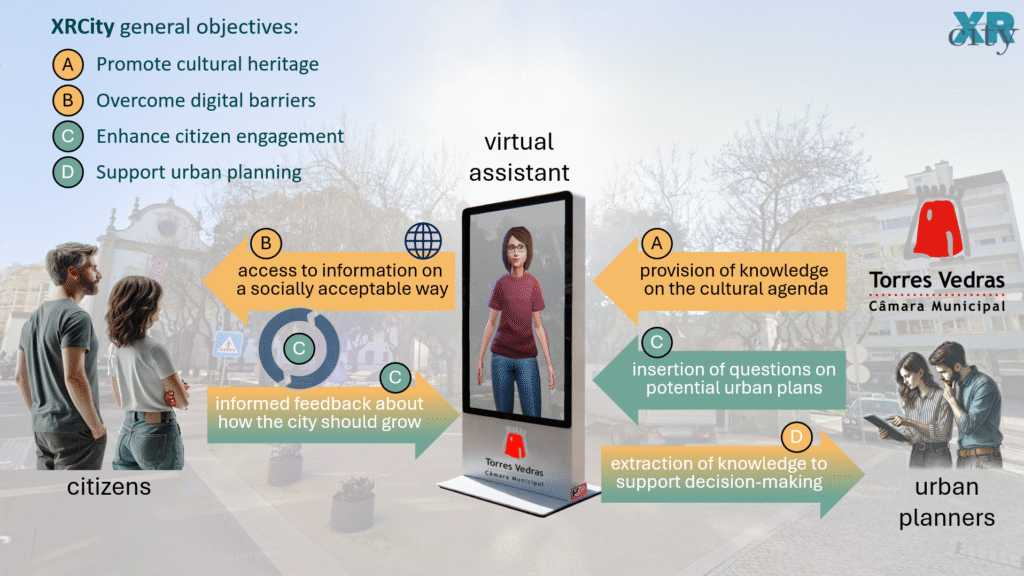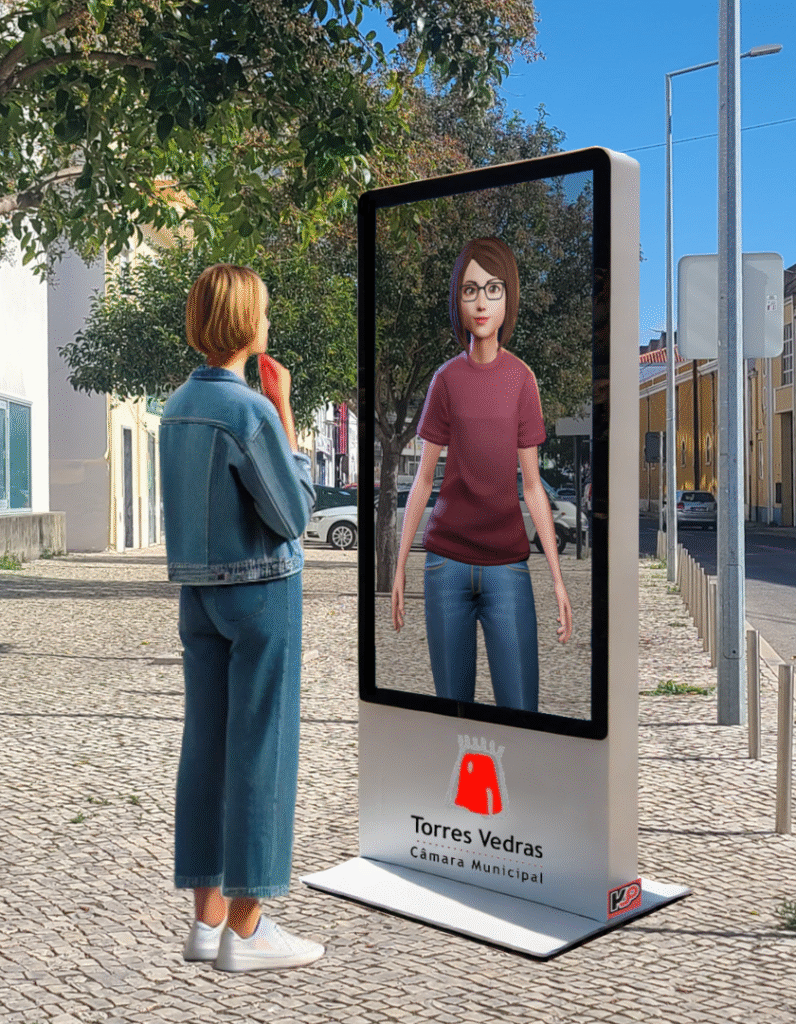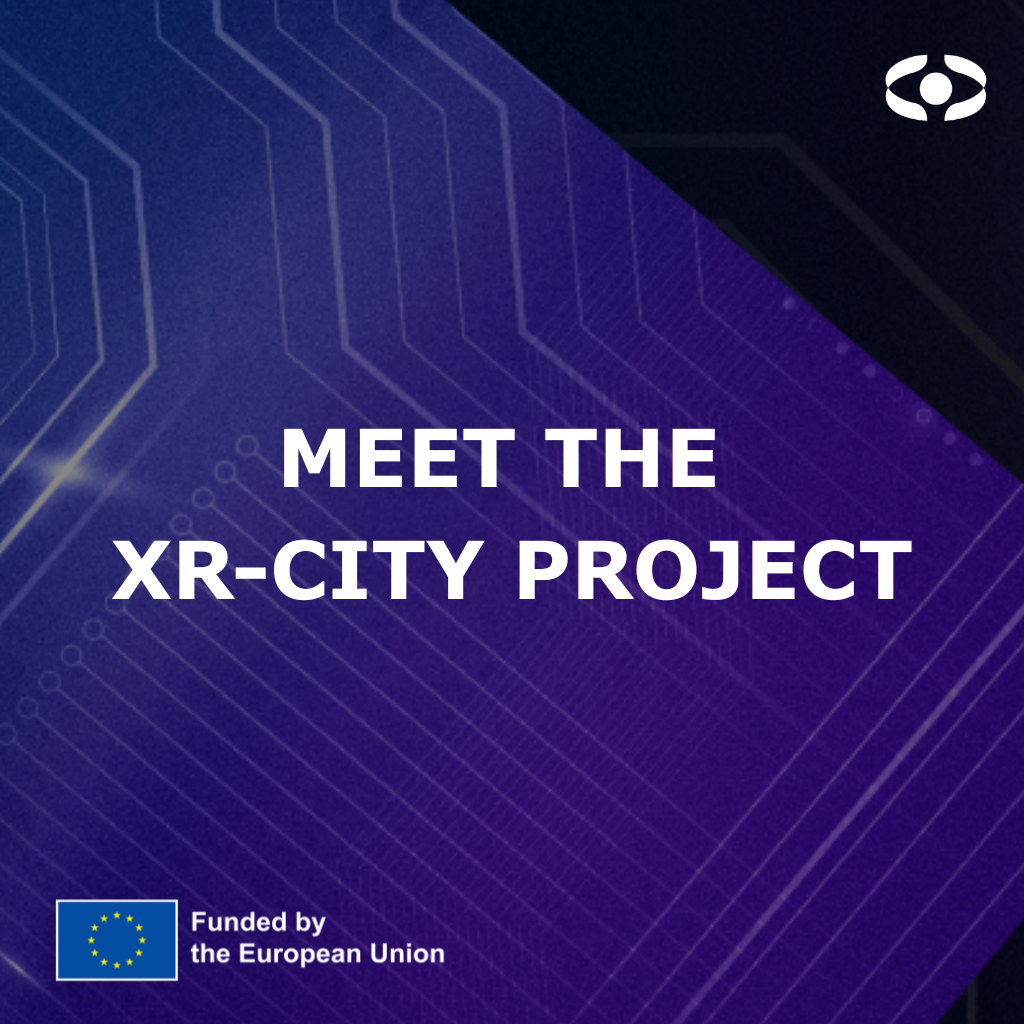1. Can you briefly explain what your project is all about? What’s unique about it?
XRCity is developing a demonstrator of advanced XR technology and generative AI, to create a socially acceptable virtual assistant. The virtual assistant will interact with citizens and serve as an alternative participatory platform on the subject of urban regeneration and cultural heritage preservation. The assistant, personified by Olivia, will be installed on an outdoor screen in public spaces in the city centre, transforming these areas into interactive hubs where citizens can engage with their urban environment. By leveraging XR technology – with a friendly avatar offering real-time information about local attractions, cultural events, and essential services – the project aims to enhance the quality of life for city residents and a sense of cultural identity, while providing valuable insights for urban planners.
2. What’s the biggest milestone with your project your startup(s) have achieved so far, and what has surprised you most on this journey?
So far in the project, we have achieved convergence in design, from both hardware and software aspects, and have been able to identify clear paths towards the measurement and enhancement of social acceptance in particular case of XRCity. We are surprise to understand the potential of these technologies as a way to provide responsible access to AI capabilities to wider audience. Furthermore, it is amazing to imagine all the possible applications in so many different sectors, where these technologies could make a difference.
3. How did you measure success?
Midterm success of the project can be measured by the way we have accomplished the planned milestones and respective KPIs. For example, the modelling of the interaction scenarios through a set of prompts that intercept communication between the user and the avatar. These results guarantee the efficient collection of user feedback while providing a safe and trustworthy environment.

4. What are your goals over the next three and six months?
Next steps in the project will be delivering SW and HW to the test phase and proceed with the validation of the system, both from technical, as well as social acceptance perspectives. Then we want to bring Olivia live and present it to the wider community in a conference and a local exhibit event, before we move it to its final street location. Communicating and engaging with the community will be the final steps before project ends in August, hopefully, bringing new and helpful insights to the municipality urban planners.
5. How has SERMAS helped you during the past few months?
Mentoring sessions have proven to be very helpful and sometimes even worked as breakthrough moments, where experiences from other demonstrators have served of inspiration and guiding towards the solutions implemented in XRCity. The SERMAS toolkit helpdesk team has been tireless in providing support for integrating the toolkit into XRCity development.


